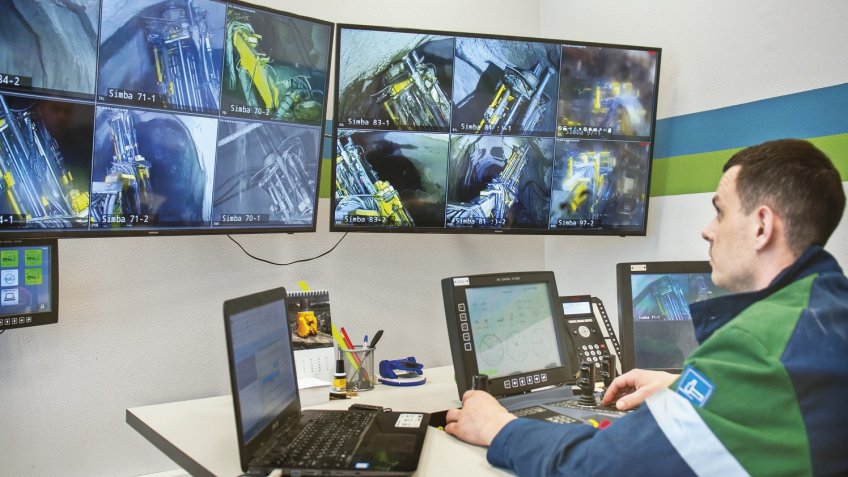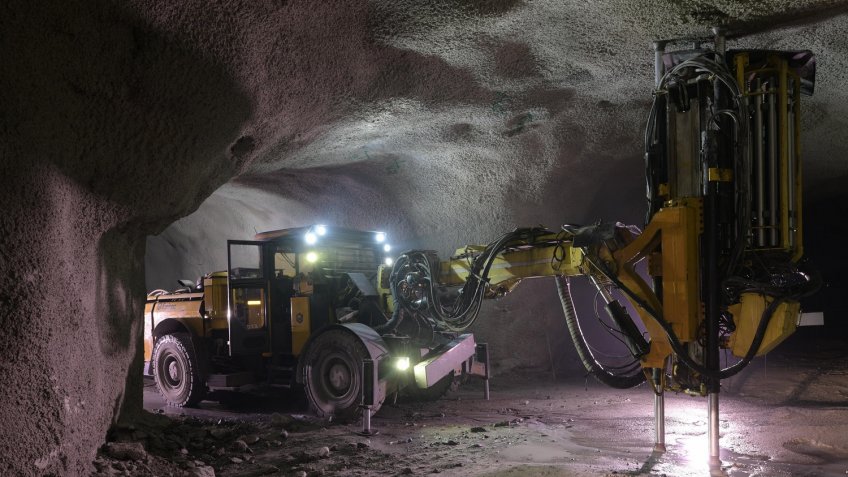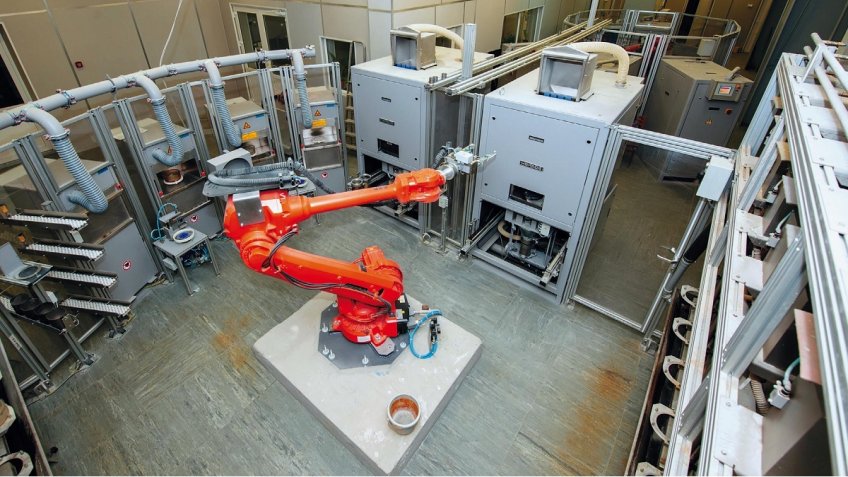
While earlier using man-operated tractor units to move the components from a warehouse to production facilities, the logistics centre of Kamaz, a largest Russian truck manufacturer, has switched now to the computer-controlled ones. Next on the company’s agenda are driverless dump trucks and electric trucks. But when will goods transportation become a fully robotised process? And how will mining enterprises change in the next few decades, knowing that mining transportation efficiency is one of the key factors affecting production profitability?
Taking mineral resources from deep open-pits and delivering them to the surface is rather tedious work. People have to spend a few hours going down the mine first, load the cargo and then climb up to the surface - all of these are dull and monotonous activities. Sometimes miners get distracted and lose concentration, resulting in pre-conditions for emergencies.
At the moment, it is nearly impossible to imagine that in the foreseeable future people somehow stop extracting copper, iron, uranium, zinc, rare earth metals, and other raw materials. Subsoil resources are the first link in most of the technological chains, which is unlikely to change anytime soon, as they are required to produce electric vehicles, wind generators, and other ‘products of the future’.
Faced with declining concentrations of the valuable component in ores and growing competition, reduction of investment and operation costs becomes an actual challenge for the industry companies. Present-day realities also suggest that mining company executives will have to respond to existing societal demands by working on minimisation of negative impacts on ecosystems and prioritising labour safety. Without adopting digital technologies, including robotisation of logistic processes, handling these issues might be next to impossible.
But what is the role of science in this transition and can it make any difference? Scientists at Saint-Petersburg Mining University are seeking the answers to these questions by conducting studies linked to different stages of digital transformation.
As Yury Zhukovsky, Director of the Center for Digital Technology at the Mining University, explains “At the Department of Industrial Automation, we are seeking new ways to improve safety and work efficiency of mining truck drivers. The goal of researchers here is to develop an algorithm based on neural networks. A software application is used to monitor the driver’s behaviour, and if the dashboard camera registers deviation from the norm, an alarm trigger is turned on”.
According to Mr Zhukovsky, those control systems that have already been put into use by mining enterprises have several drawbacks. In particular, they either require a substantial modification of the truck or allow integrating the equipment into a single scheme only if the driver puts some of the hardware on themselves.
Yuri Zhukovsky adds, “We have developed a compact device combining a video camera, a single-board computer, and an alarm system consisting of a speaker and LED indicators - all into one unit. By using high-resolution cameras coupled with a trained neural network, we can process data about driver’s condition with sufficient precision, making it possible to determine the moment when the person falls asleep in less than a second. Then an audio alarm is generated, and the seat or wristband starts vibrating. If the driver remains in deep sleep or cannot control the equipment for whatever reason, the vehicle control is switched into automatic mode, and safe braking procedure is carried out. Thus the possibility of driver-caused accidents at the mines can be eliminated. Moreover, significant capital investments are not necessary when implementing our solution due to the low costs of components and installation simplicity”.
A few decades later, there will not be any need in such studies, as truck-drivers will not be in demand at all. The profession will die out like the dinosaurs in the ice age. According to experts from Strategy &, a global strategy consulting firm, the trucking industry will have radically changed by 2030.
Analysts say that by then we will have been living in the new reality, with robotised warehouses, smart cargo tracking systems and driverless trucks being part of it. Those market players who will still rely on actual people unable to keep up with the trend will lose the competition battle, since switching to a new type of driving system will help to save on logistics costs up to 80%.
Similar changes will occur in the mining sector. Moreover, several Australian companies have already implemented some remote administration tools, including ones allowing distance control of dump-trucks, loading machines and drill rigs.
The most advanced Russian enterprises are following the same path and working on production automation. For example, PhosAgro, Russian chemical holding company, has already introduced the remote underground drilling system at its Kirovsk Plant. An operator working in the office, above the ground, administers up to six drilling rigs below the surface simultaneously. Consecutively, their production efficiency can be increased by 20%, not to mention the significant improvement of labour safety.
Russian company’s further plans include implementing the system for conveying of overburden to dumping sites at the Vostochny mine. Three lines totalling 5 kilometres in length will replace the whole truck fleet, thus reducing the cost of transporting overburden by 15%. Self-driving dump trucks and excavators will be also made use of. New devices will be loaded and then moved along the intended route from the open-pit to the truck dump, with no people directly involved in the process.
The Center for Digital Technology at the Mining University is now involved in developing an algorithm that would allow one operator to control the maximum number of machines, up to the point where all devices involved in the processes of extraction, loading and transportation can be controlled remotely. The digital industry platform will act here as an integrator of production processes. Its purpose will be to gather and combine the data from various links in the technological chain - whether it be a person or machine - and help the manager to analyse them.
Mr Zhukovsky sums up, “Of course, digital transformation is impossible if we do not develop human resource capital. Future engineers should become professionals working at the junction of various industries, which means they will need to be highly competent - and not only in IT, but also in geology, geomechanics, power and automation engineering, and numerous other disciplines”.
It is expected that in the next ten years, almost a third of all currently existing jobs will be robotised - primarily where harsh working conditions are implied, i.e. in the mines and quarries. There will be no need for people to work under the ground, only if a remotely piloted vehicle gets broken or a drilling rig has to be moved.
As a result, low-skilled personnel will not be as demanded as it is now, while the importance of engineering education will significantly increase. The most sought-after industry specialists are going to be digital data interpreters, software customisation specialists, and operators administering remote devices. It should be noted that the latter area will see growing competition as well due to the widespread distribution of software, leading to fewer employees needed to operate the machines.


